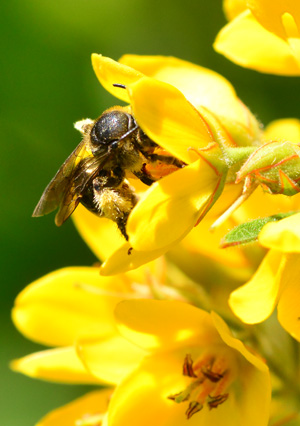Bats on maternity leave


This is Paul Steven’s weekly Wildlife Sightings column written June 7, appearing in the Chichester Observer, the Littlehampton Gazette, the Bognor Regis Observer, the Shoreham Herald and the Worthing Herald.
I conducted my monthly bat survey on the evening of July 1. I only picked up three species on the detectors but at this time of year that isn’t too surprising. Many female bats are at their maternity roosts, suckling youngsters in June and July. The females will emerge to feed at night but don’t range as far from the roost. On the plus side I detected two Daubeton’s bats over Arun Riverlife. This species fed on insects over the water here when it was still ‘Swan Lake’, before restoration of the wet. The fact the Daubenton are back over this spot means the ecology in the lake has truly bounced back after the de-silting and construction.
On Friday night I put out the moth traps because Learning Manager Claire Drew and I were running a Moth Morning workshop at 7 am on Saturday. I wasn’t optimistic we would find much with the rain that fell overnight but I was pleasantly surprised. I know British moths have to be hardy to live in our weather conditions but we had 37 different species in the trap! There were 12 elephant hawk moths, five, small elephant hawk moths and 3 poplar hawk moths to name just the big boys! Claire liked the scorched wing moth that resembles a piece of burnt bark and I was pleased to see my first small angle shades moth.
I hear a Cettis warbler in the reedbed but there is not much singing today as reed and sedge warblers are second clutches of eggs or trying again. On the wing instead are the butterflies. I spot a small tortoiseshell, small whites and a meadow brown. This year’s peacocks and small tortoiseshell biutterflies are emerging now. You may have noticed this in your own gardens but the mild spring has brought the buddleia, a butterfly favourite, into flower quite early. Some visitors are wondering where the butterflies are – the butterflies are on time but the plant is early. From the amount of caterpillars I have seen recently, there will be many butterflies, all in time for the Big Butterfly Count that starts July 19th organized by Butterfly Conservation UK.
As I exit the reedbed I watch the solitary bee Macropis europaea crawl over a clump of yellow loosestrife, its legs thick with yellow pollen. This bee relies on the oil from the yellow loosetrife to build waterproof walls that make up the cells that house eggs in her nest.
Along the pathways fragrant meadowsweet is flowering alongside tall and pink valerian and towering hemp agrimony with clusters of small pink flowers. Spiky thistle is going to seed, in time to provide food for fledging gold finches.